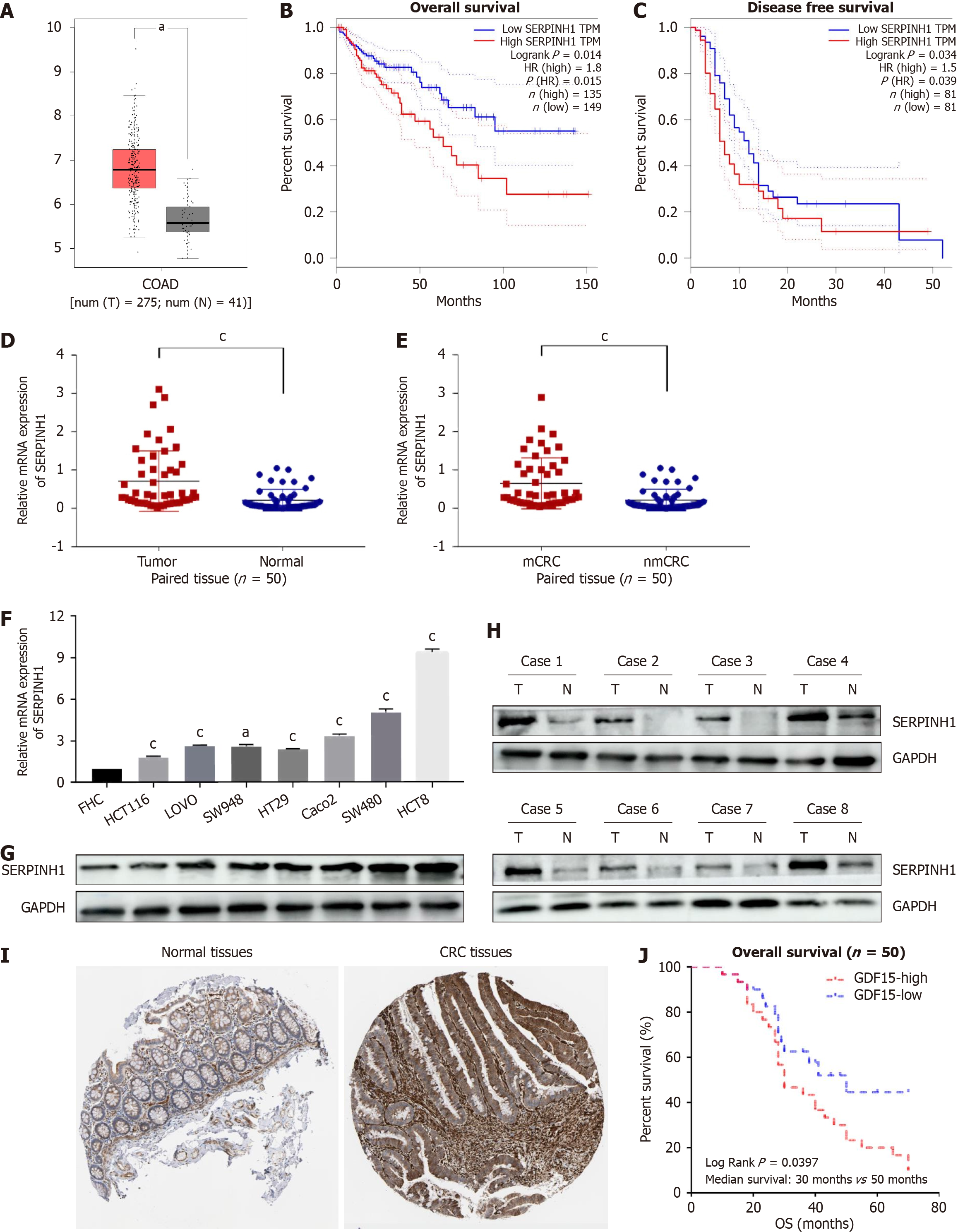Copyright
©The Author(s) 2024.
World J Gastrointest Oncol. May 15, 2024; 16(5): 1890-1907
Published online May 15, 2024. doi: 10.4251/wjgo.v16.i5.1890
Published online May 15, 2024. doi: 10.4251/wjgo.v16.i5.1890
Figure 1 Identification and characterization of serpin peptidase inhibitor clade H member 1 in colorectal cancer cells and tissues.
A: Upregulated serpin peptidase inhibitor clade H member 1 (SERPINH1) mRNA expression in colorectal cancer (CRC) compared with normal colorectal tissue in The Cancer Genome Atlas (TCGA) database; B and C: Expression mRNA level; D and E: Kaplan-Meier analysis of overall survival and relapse-free survival of colorectal adenocarcinoma (COAD) patients with low vs high SERPINH1 expression from TCGA datasets; F and G: The relative expression of SERPINH1 protein and mRNA in normal human colon epithelial cells and seven CRC cell lines by western blotting and quantitative real-time polymerase chain reaction. mean ± SD (n = 3); H: Protein level of SERPINH1 in COAD (matched tissues and unmatched tissues); I: Protein expression level of SERPINH1 in normal tissues and CRC tissues from HPA; J: Kaplan-Meier survival analysis of the association between SERPINH1 expression and overall survival in 50 CRC patients. All the data are presented as the mean ± SEM. aP < 0.05, cP < 0.001. SERPINH1: Serpin peptidase inhibitor clade H member 1; CRC: Colorectal cancer; COAD: Colorectal adenocarcinoma.
- Citation: Jin XS, Chen LX, Ji TT, Li RZ. SERPINH1 promoted the proliferation and metastasis of colorectal cancer by activating PI3K/Akt/mTOR signaling pathway. World J Gastrointest Oncol 2024; 16(5): 1890-1907
- URL: https://www.wjgnet.com/1948-5204/full/v16/i5/1890.htm
- DOI: https://dx.doi.org/10.4251/wjgo.v16.i5.1890









